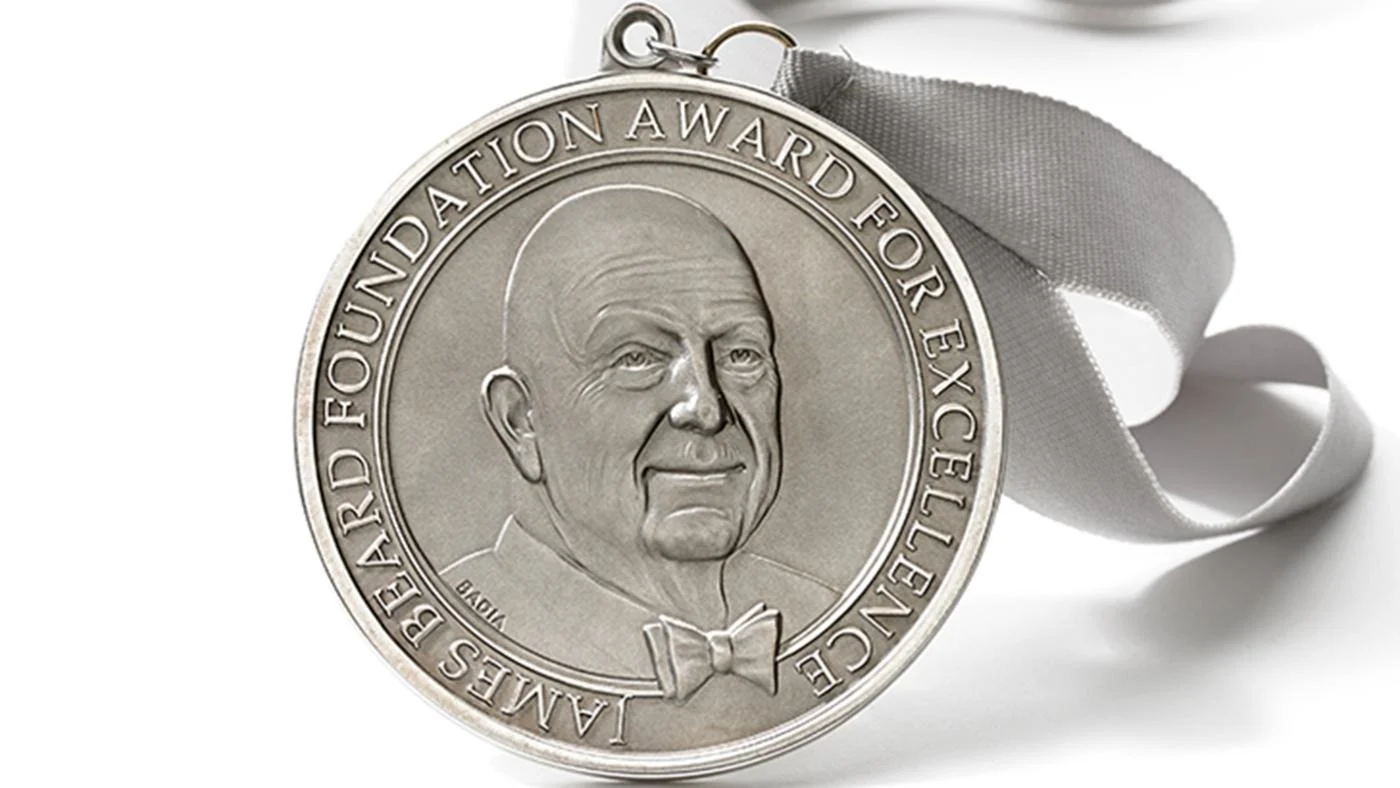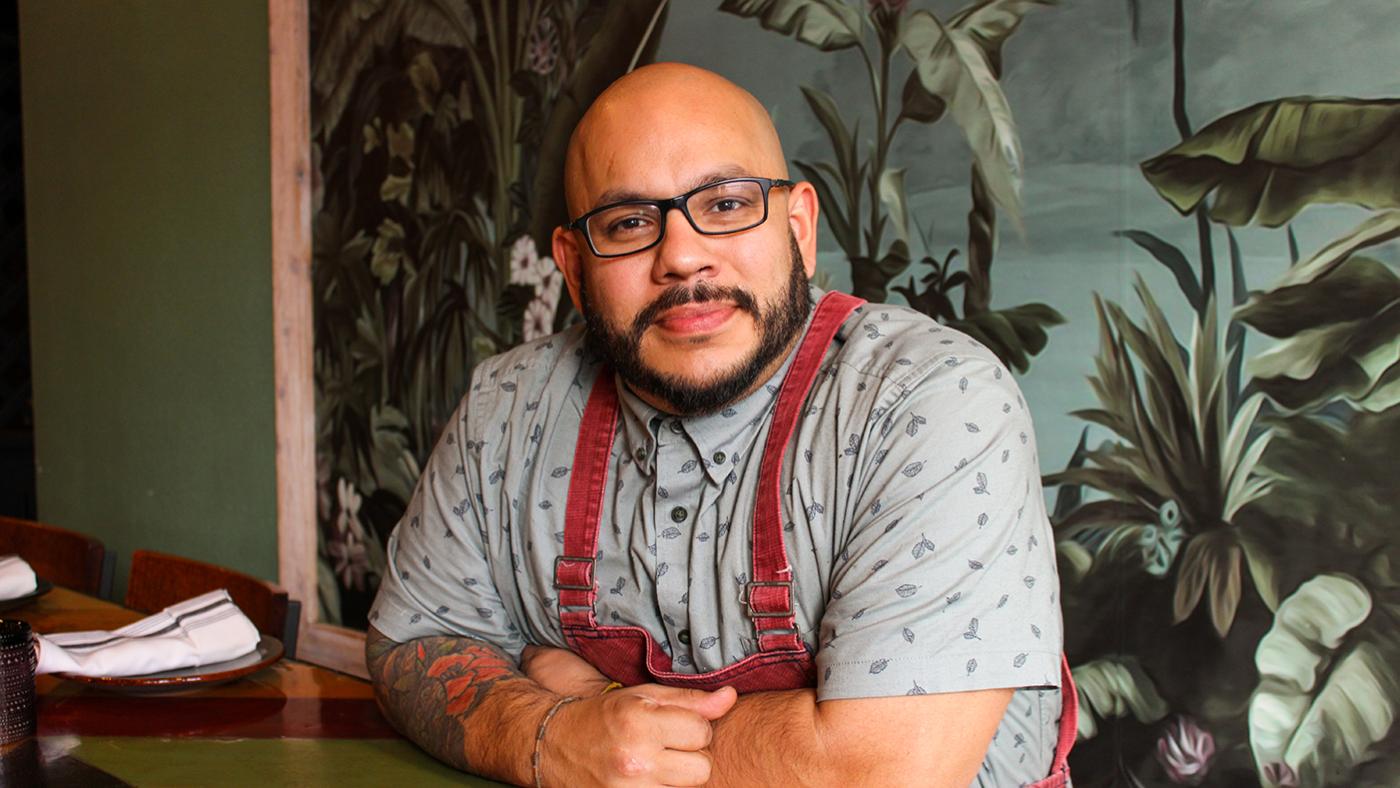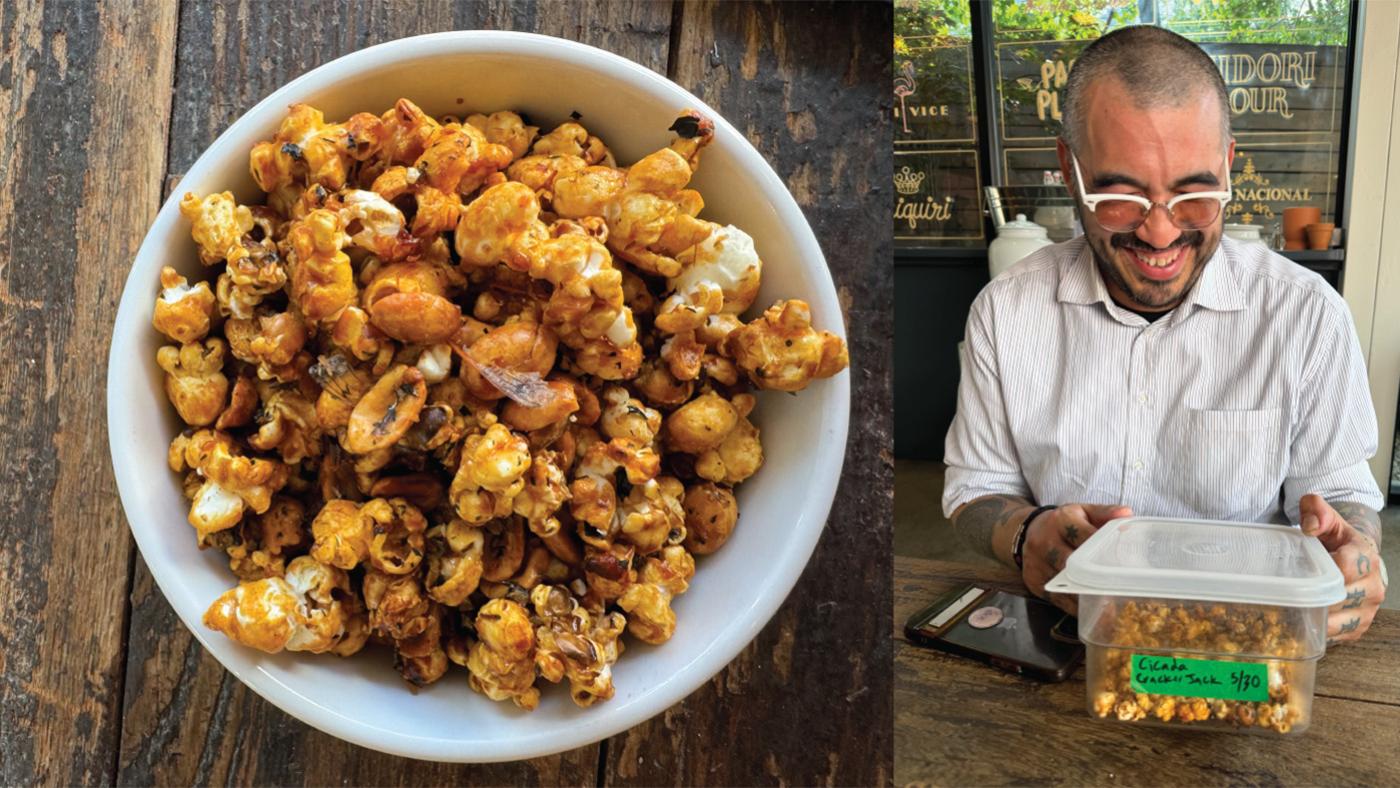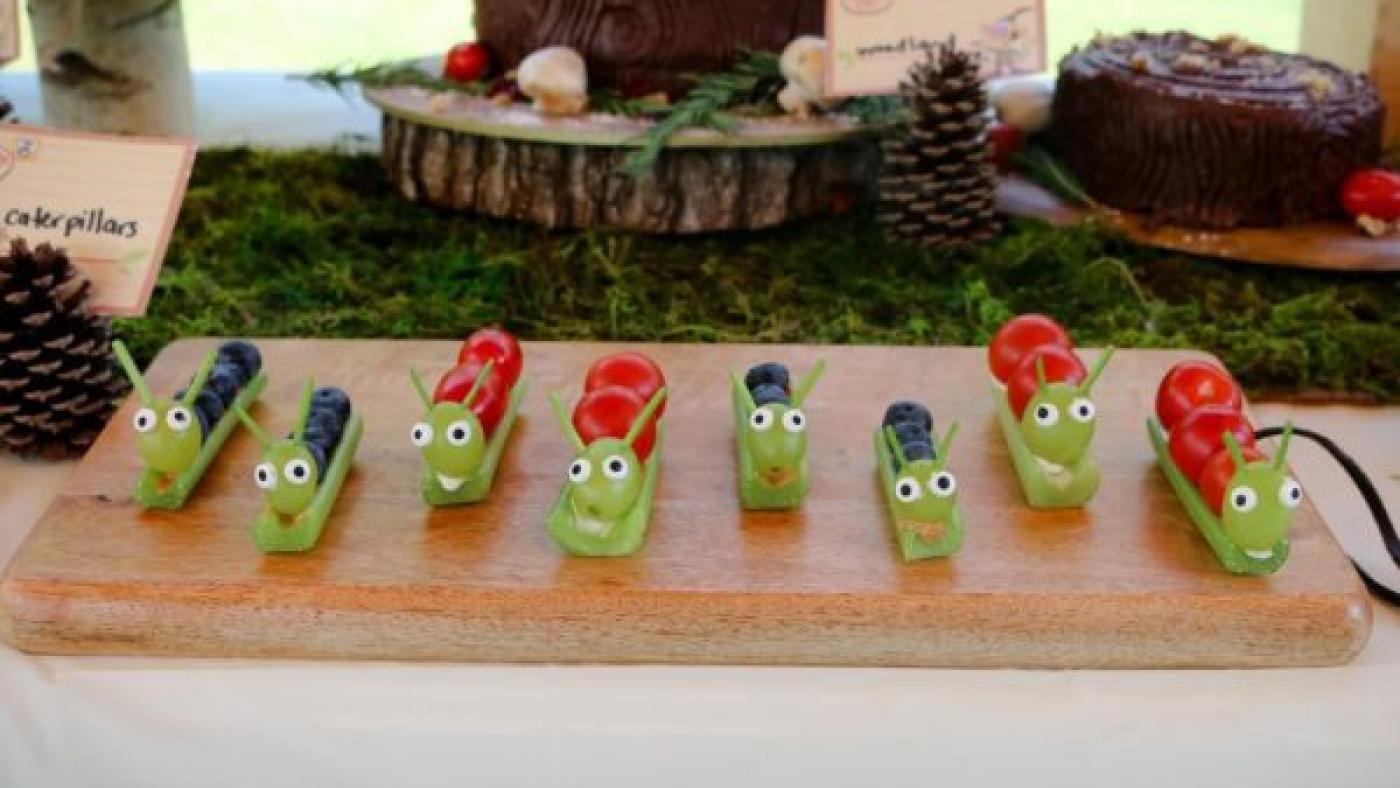How Dovetail Brewery Uses Engineer-like Precision to Master Neglected Beers – While Serving Them in Unique Ways
Daniel Hautzinger
May 21, 2024

Get more recipes, food news, and stories by signing up for our Deep Dish newsletter.
You probably think there’s only a couple ways to serve a beer: fresh from a keg or cask, or out of a can or bottle. But the meticulous minds behind Dovetail Brewery in North Center are eager to show you not only a variety of engaging methods of drinking from around the world, but also to ensure the neglected beers they're serving you are as fine-tuned to their own sense of a great beer as possible.
During the winter, you can enjoy a frothy beer there warmed and caramelized by a hot metal poker in the German tradition of bierstacheln. Stand while you sample a lager poured in some eight different ways with varying levels and thicknesses of foam to experience a Japanese tachinomi. Snack on cubes of cheese sprinkled with celery salt alongside your beer as they often do in Belgian beer cafes. For something heartier, try the Swiss tradition of treberwurst, in which sausage is heated in the still-hot spent grain used in brewing beer that day. If you crave added flavor with your beer, there are radlers – brews mixed with pop, as they do with Chicago’s Filbert’s brand at Dovetail – or you can combine various syrups with a Berliner Weisse.
Or cool off this Memorial Day weekend with a fruit-infused beer turned into a slushie on May 25-26 at Mayfestiversary, Dovetail and neighboring Begyle Brewing’s annual spring fundraiser for The Friendship Center, a food pantry in Albany Park.
All those unique services are periodically available at Dovetail, but the brewery is attentive to the experience of drinking a beer even on a normal day in its wood-accented, brick taproom between the Metra and Brown Line tracks. Glassware is specifically chosen to showcase the qualities of distinct styles, and the brewery takes pride in having a “proper head of foam,” as co-founder Hagen Dost says. “You get the aroma on the way to your lips, and you enjoy it the whole way down, and then you have a nice foam-laced glass when it’s empty.”
“It’s a beautiful thing to see when a server can pull that off,” he adds: it means the beer has the correct amount of carbonation, the draft system is balanced, the glass is clean enough to support the foam. “What I love about it is that all of this [attention to detail] is hidden.”
That’s as good an encapsulation of Dovetail as any: rigorous exactitude behind the scenes allows a guest to enjoy the uncomplicated pleasures of drinking a crisp beer without thinking about any of the involved processes behind it. The simplicity belies the complexity of what they’re actually pulling off.
Much of that is inherent in the styles of beer that they specialize in and the traditional methods they use to brew them. There are two major categories of beer: ales, in which the yeast that causes fermentation rises to the top in a foam during brewing, and lagers, where the yeast sits at the bottom and fermentation takes place more slowly, at a cooler temperature. Lagers are generally brighter and lighter and take longer to produce, which is part of the reason why most craft breweries in America have focused on ales.
“When it comes to craft brewers, ales dominate – which is largely because of the popularity of IPAs, but they also take less time to produce, so you can make more (and sell more),” emails Karl Klockars, the co-founder and main writer for GuysDrinkingBeer.com and author of Beer Lovers Chicago.
Dovetail, however, focuses largely on lagers, the kinds of bright German and Czech beers that Dost and his co-founder Bill Wesselink bonded over when they met in Munich while studying to become certified master brewers. But those beers aren’t very shelf-stable and thus don’t import well, so the two native Chicagoans decided to open a brewery together here that would spotlight those styles – not only because of their love of them and the traditional methods with which they are brewed, but also because few craft breweries in America were making high-quality lagers at the time.
“Those are the beers that we really like to drink, and they also happen to be underserved in this market,” says Dost. He and Wesselink opened Dovetail in 2016 with three beers: a lager, the wheat beer hefeweizen, and a smoked rauchbier – none of which are on the typical opening list of craft breweries.
“Any American brewery that’s never made an IPA is an anomaly of the best kind,” says Klockars. (Dovetail’s one concession to IPA-lovers is what they call a “Hopfenlager,” which has a bit more bitterness and bite and is the only beer of theirs that uses American, rather than continental European, hops.)
And yet, Klockars points out, “Despite the growth of craft ales and IPAs specifically in the past fifteen years, lagers are still the world’s dominant beer style thanks largely to beers like Bud Light, Miller Light, Heineken, and Modelo.”
Lagers initially became popular in America in the mid-nineteenth century as German immigrants settled in cities like Chicago. “Initially a city of ales, Chicago increasingly embraced lagers, thanks mostly to the surge of German immigrants who opened bars and breweries (and also populated them),” Josh Noel notes in The Chicago Food Encyclopedia. The demand for lagers in Chicago eventually outstripped the supply produced here, leading to the rise of nearby St. Louis and Milwaukee as beer-producing capitals, with Budweiser in St. Louis and Schlitz and Miller in Milwaukee mass-producing very light, low-alcohol lagers that came to dominate the market. Some people have even argued that the prevalence of those “industrial lagers” is one of the reasons American craft breweries initially focused so single-mindedly on ales.
Dovetail’s lagers are in some ways a return to the early days of Chicago brewing and its roots in German traditions, before the rise of those adulterated mass-produced lagers. “I didn’t know a lager could taste like that,” Dost says of trying the beer from small breweries in Germany. “I wasn’t satisfied with any lager that I had tasted from an American brewery, because I had tasted lagers in their homeland.”
Dost was an engineer for twenty years, and he brought the precision of that profession to brewing beer. After he and Wesselink finished their education in Germany, they brought the measured, involved methods of continental brewers back to Chicago: decoction mashing, open fermentation in coolships, horizontal lagering tanks – things for beer nerds like the people at Dovetail to embrace, and the average beer drinker to look past and simply enjoy the product.
But lagers aren’t the only high-effort, slow-production beers that Dovetail makes. They also produce lambic-style beers, letting wort (what becomes beer) cool in a large open tank – the coolship – for a long enough period to allow airborne yeast to settle in and spontaneously ferment, instead of introducing a specific cultivated strain of yeast as with most other beers. (Dovetail’s lagers spend just a short period in the coolship compared to the lambics.) It’s a style associated with Belgium that creates funky beers unique to their production location – after all, the mix of airborne microbes is different everywhere. Dovetail often incorporates fruit from local farms into their spontaneous ferments.
Dovetail also makes and proselytizes for rauchbiers, which are lightly smoked. “Being patient enough to make lambic-style beers and stubborn enough to encourage the world to appreciate smoked beers makes them even more special,” says Klockars; both styles of beer are rare, especially in America.
It’s this quiet focus on niche, difficult-to-master beers that garnered Dovetail a spot on the national beverage publication Punch’s ten best craft breweries this year – that, and their interest in service traditions.
The brewery’s first foray into a special service was in 2019 with a “Kölsch Night,” modeled after how the easy-to-drink ale is served in its native Cologne. (Kölsch may be an ale, but it adopts some aspects of lager production.) Kölsch is the only beer you’ll get, and you don’t go to the bar for refills. Rather, servers walk around carrying a circular tray called a kranz or wreath filled with full, slender glasses. If you don’t have kölsch in front of you, they’ll set down a full glass, take away the empty, and make a mark on your coaster. The beer will keep coming until you place the coaster on top of your glass, at which point the marks are tallied up for you to pay. (You can order a kranz of kölsch any time at Dovetail, not just on Kölsch Night.)
While the servers at Dovetail might be a bit friendlier than the gruff ones you’ll encounter in Cologne, the brewery has done its best to serve an approximation of the beer you would get there. “One of the highest compliments that you can get here at Dovetail is when a European comes in and says, ‘This reminds me of home,’” as a native of Cologne once did, says Jenny Pfäfflin, a brewer and marketing and creative manager at Dovetail who is responsible for many of the special service events.
While those events draw crowds, the biggest happenings of Dovetail’s year are the Festiversaries that they host with their neighbor Begyle in May and October. The annual festivals, with their food trucks, music stages, and, of course, beer, are entirely organized by the two breweries without help from an outside production company. All of the proceeds from the suggested donation entrance fee benefit The Friendship Center, which has translated the funds raised since the first Festiversary in 2018 into over 2.1 million meals for people facing hunger, according to executive director Justin Block. “The Friendship Center couldn’t have supported the almost 50,000 folks in 2023 [that we did] without this partnership,” he says.
“It’s really humbling to be able to provide this kind of thing to The Friendship Center, because food insecurity is something that’s unfortunately just always going to be part of our community,” says Pfäfflin.
She came to Dovetail not just out of a shared beer geekiness – engage Pfäfflin or Dost on Czech lagers or types of hops and they become as bubbly in their enthusiasm as their pilsner is in effervescence – but also because of the brewery’s attention to service. “There’s this one Czech proverb that goes, ‘It’s the brewer that makes the beer, but it’s the bartender that completes it,’” she says. “That philosophy is definitely put into place here as well. That beer is not ready until it’s in front of the customer, and people like [Dovetail bartenders] Tim and Daniel are equally a part of this process. It sounds corny, but we’re all involved with this beer.”









